Join More Than 50,000+ Subscribers and get latest camera news and rumors
NEW CAMERA VIDEOS ON YOUTUBE
|
By admin, on September 23rd, 2010
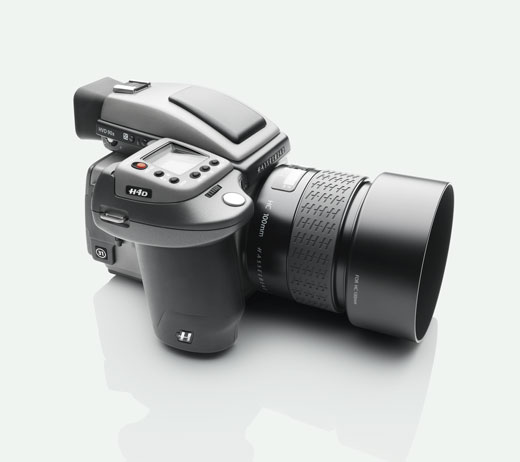 Hasselblad H4D-31 The H4D-31 – the perfect digital medium format alternative for 35mm DSLR photographers and for V-customers who are ready to transition to digital.
Following the enthusiasm with which the H4D-40 has been embraced, Hasselblad was inspired to offer photographers the H4D-31, bringing the ultimate in image quality to high end 35mm DSLR photographers who want to step up to medium format. At the same time, Hasselblad wanted to offer its V-System customers a digital alternative by bundling the H4D-31 with a CF-lens adapter for mounting V-System lenses.
The H4D-31 delivers the same superior image quality that is the hallmark of the Hasselblad name. Thanks, in part, to the combination of its low noise color filters, Hasselblad Natural Color Solution (HNCS), with its single color profile, and exquisite performance of the HC/HCD line of lenses, the H4D-31 provides color accuracy, excellent detail and clarity – everything you’d expect from a Hasselblad camera and more.
 Hasselblad HC 80mm Equipped with the same advanced technology as the H4D-40, the H4D-31, features Hasselblad’s True Focus, which provides focusing accuracy throughout the image field – even at close range with shallow depth-of-field. Hasselblad’s innovative use of yaw rate sensor technology solves the challenge of having to focus and recompose in order to acquire a focus point outside the center area of multi-point AF systems. True Focus ensures that photographers quickly and accurately achieve the desired focus at any point.
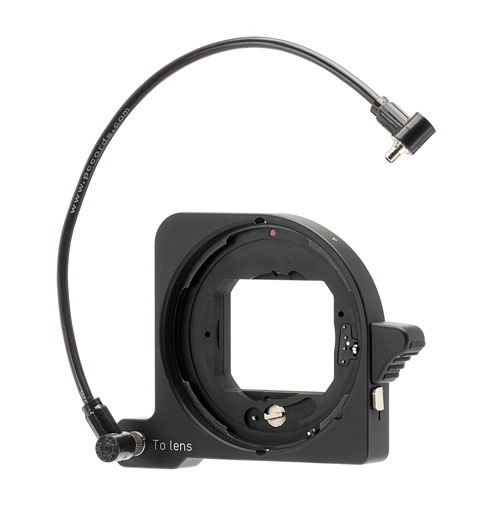 Hasselblad CF Lens Adapter Currently shipping, the H4D-31 is available in two configurations, both with the latest version of Hasselblad’s Phocus 2.6 software. The first, designed for high end 35mm DSLR photographers comes bundled with an 80mm lens. The other offers a digital medium format solution for V-System users by bundling the H4D-31 with a CF-lens adapter. Both options are priced at 9,995 Euro (+tax).
By admin, on September 23rd, 2010
HASSELBLAD
Hasselblad has been exploring next steps in creating ultra-high resolution capture. Based upon new developments of its multi-shot technology Hasselblad labs are releasing test results from a new 200 megapixel capture device.
The 200 megapixel device is based upon a 50 megapixel sensor mounted onto the Hasselblad patented symmetrical multi-shot frame, which can accurately position the sensor with a sub-micron accuracy using piezo-electrical actuators.
Capturing 6 shots with the sensor positioned accurately at a sequence of quadrants of the basic 6-micron pixel, color information from the Bayer-patterned pixels is used to create a 200 megapixel capture. The color information is composed such that it supersedes the information from a single-shot captured with a potential 200 megapixel single-shot sensor.
Over the past years Hasselblad labs have refined the tolerances of the basic sensor frame calibration to achieve the above results, and on top of the physics new color algorithms and filtering techniques have been applied to achieve the 200 megapixel image. The complete capture device is now in final testing for stability and color accuracy to fit into Hasselblad’s unique generic one-profile color rendering.
Multi-shot cameras are used by studio photographers to generate images with ultra high resolution, and exact color information. Key customer segments include the world’s most famous museums and studios where cars, jewelry, and costly products are shot with an image quality leaving no room for compromise. Apart from its multi-shot, the Hasselblad H4D-50MS has normal single-shot mode included as well.
Upon successful testing, Hasselblad plans to release the new ultra-resolution capture mode for H4D-50MS cameras by early 2011. All current H4D-50MS cameras will be offered this new capture mode at the factory, by using our new calibration and firmware upgrade, at a fee to be announced in due course.
To view and compare the resolution and quality or our new 200 megapixel capture, please come and see us at our booth during photokina, at hall 2.1 stand A-021.
By admin, on September 23rd, 2010
Launched in September 2009, the H4D System not only marked a new line of cameras but it introduced new advanced technology to the world of photography with its unique True Focus and Absolute Position Lock features. With access to the renowned HC/HCD lens family, it’s no wonder that the H4D has been so well received. The H4D camera line now offers several different models, including the H4D-40, which was designed to meet the needs of 35mm DSLR users who want to add medium format to their creative tools. The remaining H4D series includes models with 50 and 60 megapixel sensors as well as Hasselblad’s unique multi-shot H4D-50MS.
Always striving to deliver the best camera system in the world to photographers, Hasselblad has introduced two new HC lenses, strengthening the H-System lens family with the new HC 50mm-II and the HC Macro 120mm-II. Both lenses have a new optical design delivering significantly improved
performance. The new lenses are available now.
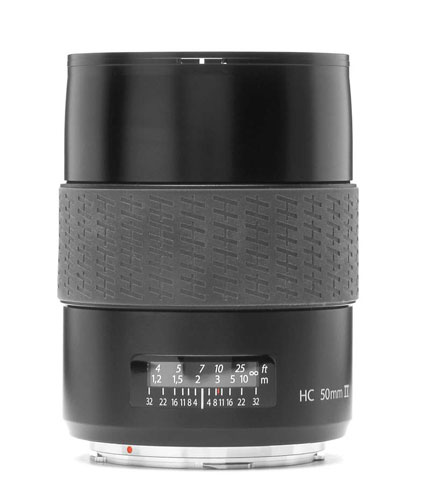
HC 50mm-II
The HC 50-II, with its moderately wide 35mm-equivalent focal length of 31.4mm, is a versatile, allpurpose lens that can be used for many different applications. The updated optical design provides higher resolution and more even performance over the image area. Close range performance has also
been improved to deliver better performance while maintaining its minimum object-to-image plane distance of 0.6m. The lens features 11 elements in 7 groups, a rear focusing mechanism and a broad aperture range of f/3.5-f/32.
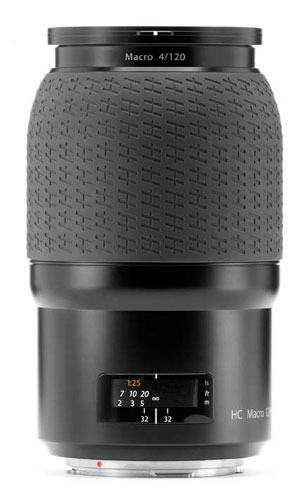
HC Macro 120mm-II
The HC Macro 120-II lens is also a very versatile lens, combining excellent macro capture capabilities (a minimum object-to-image plane distance of 0.39 m and a maximum image scale of 1:1) along with its slightly longer focal length making it ideal for product and portrait photography (35mm equivalent focal length of 73.5mm). Thanks to its updated optical design, the lens offers a number of improvements including higher resolution and better close range performance. Importantly – especially for macro work – the new lens offers improved color correction, with cleaner unsharp areas that are free from color cast. The front focusing lens utilizes 9 element in 9 groups, with an aperture range of f/4-f/45 that, when closed down, provides excellent depth-of-field.
In addition to the introduction of the two new lenses, Hasselblad will soon issue a free firmware update for the H4D system cameras in response to customer feedback and requests.
New H4D functionality extensions
Electronic spirit level:
With this new feature, a 3-dimensional virtual level is displayed on the rear LCD providing users with a guide to easily align the camera in both horizontal (landscape) and vertical (portrait) positions using two different graphical interfaces that automatically change according to the camera’s orientation. Direct feed-back on the levelling is also present in the viewfinder. This is all accomplished via H4D’s precision yaw rate sensors using either the factory-calibrated mode or a user-calibrated setting. HTS 1.5 tilt-and-shift converter users will get a straightforward and accurate starting point for composing for tilt photography.
Preview in tethered mode:
When shooting in tethered mode, users can select to have the preview displayed on the camera’s rear panel LCD for remote viewing directly on the camera.
Information display:
With a simple press of a button, relevant camera information will be displayed on the rear LCD. A new graphical interface gives priority to settings such as aperture, shutter speed, ISO, and the number of remaining frames with other data available as well.
GIL support for H4D-60:
The firmware update adds full support for the Hasselblad Global Image Positioning GPS device to the H4D-60. With this new functionality, the GIL is now supported on all H2D/H3D/H4D cameras.
The firmware update, to be released by the end of this year, can be downloaded free of charge from: www.hasselblad.com.
By admin, on September 23rd, 2010
 New Digital Back for V-System Cameras Hasselblad Introduces New Digital Back for V-System Cameras
V-System users now have an additional option for turning their cameras into a powerful digital capture device with the new 50 megapixel CFV-50.
Transitioning from film to digital imaging is easy for V-System users thanks to the introduction of the CFV-50 – a 50 megapixel back with a sensor that is twice the size of the best 35mm full-frame DSLRs on the market today. The CFV-50 marks the third digital solution for the V-System community, building upon the successful releases of the CFV-16 and the CFV-39.
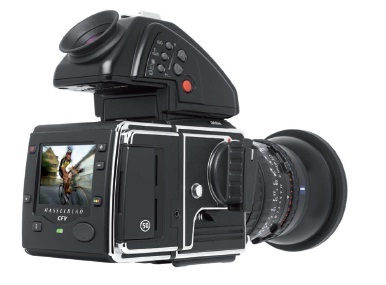 Hasselblad V-System In order to ensure an almost seamless conversion to digital, the CFV-50 was custom built to match the design and functionality of the V-cameras. Compatible with virtually all existing V-cameras, including the 202FA/203FE/205FCC models, the CFV-50 offers cable-free operation and optimized integration between back, body and lens.
While easy to use, the CFV-50 offers a number of advanced features including Hasselblad’s DAC lens correction technology for most of the V-System Carl Zeiss lenses. DAC completely corrects for distortion, lateral chromatic aberration and vignetting in exactly the same way as it does for the H-System lenses. Additionally, the CFV-50 takes advantage of the Hasselblad Natural Color Solution, which uses one generic profile and, therefore, delivers accurate colors straight out of the box. The
digital back offers flexibility as well, with square and horizontal format options.
Optimum portability and image storage are critical for the professional photographer. The Hasselblad CFV-50 offers a choice of CF card storage or tethered operation. With these operating and storage options, the photographer is able to select a mode that suits the nature of the work at hand, whether
in the studio or on location.
The CFV-50 Price is 11,990 Euro (+tax). For more information and the opportunity to see the
back in action, please visit the Hasselblad booth in Hall 2.1, Aisle A, Booth 021.
By admin, on September 23rd, 2010
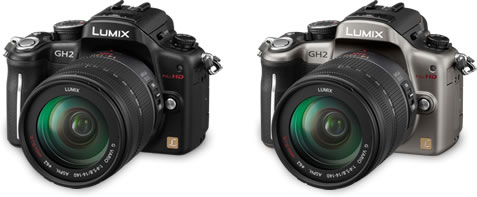
Panasonic Lumix DMC GH2 is a 16.05 Megapixels camera with intuitive touch-control shooting, which is popular with the DMC-G2 for its outstanding usability, The iA (Intelligent Auto) mode is constantly evolving and the Intelligent D-range Control is newly integrated in the DMC-GH2. The Intelligent Resolution has new “EXTENDED” option for more natural looking to be printed in large size.
Click here to view Sample Images taken form DMC GH2 Digital Camera
Lumix DMC-GH2 Sample Images
Lumix DMC-GH2
Panasonic Lumix GH2 Sample Video
By admin, on September 23rd, 2010
Single Focal Length Lens
LUMIX G 14mm / F2.5 ASPH (H-H014)
The world’s lightest* interchangeable single focal length lens LUMIX G 14mm / F2.5 ASPH. features a 14mm (35mm camera equivalent: 28mm) wide angle and F2.5 brightness with sharp, high contrast image rendering. Taking advantage of the wide angle of view and deep depth of field, the compact LUMIX G 14mm / F2.5 ASPH. offers excellent performance in shooting not only landscapes but also snapshot or indoor shooting.
Comprising of six lenses in five groups including three aspherical lenses, the lens system achieves both high compactness with short overall length of 20.5mm and high optical performance. It also excels in shooting subjects with components of straight line including architectures thanks to the minimized distortion. The integration of stepping motor and inner focus drive system realizes the use of silent, high speed contrast AF.
Seven blades give the aperture a rounded shape that produces an attractively smooth effect in out-of-focus areas when shooting at larger aperture settings. Highly reliable metal mount assures durability for active use, and uses multi-coated lens elements that minimize ghosts and flare to further enhance its shooting performance.
* For a digital interchangeable lens as of September 21, 2010.
Telephoto Zoom Lens
LUMIX G VARIO 100-300mm / F4.0-5.6 / MEGA O.I.S. (H-FS100300)
The new telephoto zoom lens LUMIX G VARIO 100-300mm / F4.0-5.6 / MEGA O.I.S. realizes 300mm (35mm camera equivalent: 600mm) handheld ultra-telephoto zoom shots with astonishingly compact and light weight profile. The LUMIX G VARIO 100-300mm / F4.0-5.6 / MEGA O.I.S. allows photographers challenge shooting subject they cannot draw near including sports, wild animals, aircrafts and so on without carrying a huge conventional ultra-telephoto zoom lens and a heavy tripod to set it on with high compression effect. Panasonic’s MEGA O.I.S. (Optical Image Stabilizer) powerfully compensates for the hand shake which severely affect the zoom shots to suppress blur.
The new LUMIX G VARIO 100-300mm / F4.0-5.6 / MEGA O.I.S. is comprised of the lens unit with 17 elements in 12 groups including an ED lens. Adopting the ED lens in the first lens group, the chromatic aberration is effectively suppressed to render sharp, high contrast images with stable optical performance over the entire zoom range. The integration of stepping motor with exclusive zoom tracking control system and inner focus drive system realizes the use of accurate and high speed contrast AF, yet keeping its sound of action as silent as possible.
Seven blades give the aperture a rounded shape that produces an attractively smooth effect in out-of-focus areas when shooting at larger aperture settings. Highly reliable metal mount assures durability for active use, and uses multi-coated lens elements that minimize ghosts and flare to further enhance its shooting performance.
3D Lens
LUMIX G 12.5mm / F12 (H-FT012)
The world’s first* interchangeable 3D lens LUMIX G 12.5mm / F12 (H-FT012) realizes 3D shooting (35mm camera equivalent: 65 mm**)***. It features two optical systems installed within the diameter of the lens mount, creating stereo images from the left and right lenses, to be processed with a 3D image processing system. Despite its unique performance, the 3D lens keeps its size extremely compact thanks to Panasonic’s advanced optical technologies and consideration of image processing system as well as structural design.
Shooting 3D content with an interchangeable lens system camera was possible by using panorama systems or a combination of two lenses and two CCDs, but these systems have drawbacks including the need for a dedicated 3D camera and the difficulties capturing moving objects. However, this new compact 3D-capable interchangeable lens allows easier handling and instant 3D shooting with cameras without a special structure for 3D shooting. It produces 3D images without distortion or time lag between left and right images, even for moving objects. The 3D images, even close-up shots, taken with this lens are easy on the eyes when viewed on 3D VIERA televisions.
This year, the “First Year of 3D Era,” Panasonic has spearheaded the industry by launching 3D-capable VIERA televisions and 3D Blu-ray Disc™ players. While 3D content, including movies and sports, has become more widely available for viewing, there are many customers who want to enjoy 3D shooting themselves. This new lens will respond to such demands. This lens allows users to shoot landscapes, people, and a variety of subjects in high-quality 3D, to be enjoyed later with their 3D VIERA televisions at home.
As 3D content becomes ever more popular across a variety of media, Panasonic is leading the industry in bringing a true-to-life 3D experience to the customers, and even a fun of creating it by themselves utilizing the LUMIX G Micro System.
* For a digital interchangeable lens of September 21, 2010.
** When setting the aspect ratio at 16:9 with the DMC-GH2.
*** Compatible with DMC-GH2 and DMC-G2 with the firmware ver.1.1. A 3D media player that supports the MP (Multi-Picture) format is required to view 3D images.
· Four Thirds and Micro Four Thirds and Four Thirds and Micro Four Thirds Logo marks are trademarks or registered trademarks of Olympus Imaging Corporation, in Japan, the United States, the European Union and other countries.
A 3D media player that supports the MP (Multi-Picture) format is required to view 3D images.
Specifications
| . |
LUMIX G 14mm / F2.5 ASPH |
| Lens Construction |
6 elements in 5 groups (3 aspherical lenses) |
| Mount |
Micro Four Thirds mount |
| Optical Image Stabilizer |
No |
| Focal Length |
f=14mm (35mm camera equivalent: 28mm) |
| Aperture Type |
7 diaphragm blades / Circular aperture diaphragm |
| Aperture |
F2.5 |
| Minimum Aperture |
F22 |
| Closest Focusing Distance |
0.18 m / 0.59 ft |
| Maximum Magnification |
Approx. 0.10x / 0.20x (35mm camera equivalent) |
| Diagonal Angle of View |
75° |
| Filter Size |
Φ46 mm / 1.81 in |
| Max. Diameter |
Φ55.5 mm / 2.19 in |
| Overall Length |
Approx. 20.5 mm (from the tip of the lens to the base side of the lens mount) / 0.81 in |
| Weight |
Approx. 55 g / 1.94 oz |
| Standard Accessories |
Lens cap, Lens rear cap, Lens storage bag |
|
LUMIX G VARIO 100-300mm / F4.0-5.6 / MEGA O.I.S. |
| Lens Construction |
17 elements in 12 groups (1 ED lens) |
| Mount |
Micro Four Thirds mount |
| Optical Image Stabilizer |
YES |
| Focal Length |
f=100mm to 300mm (35mm camera equivalent: 200mm to 600mm) |
| Aperture Type |
7 diaphragm blades / Circular aperture diaphragm |
| Aperture Range |
F4.0 (Wide) – F5.6 (Tele) |
| Minimum Aperture |
F22 |
| Closest Focusing Distance |
1.50 m / 4.9 ft at all focal lengths |
| Maximum Magnification |
Approx. 0.21x / 0.42x (35mm camera equivalent) |
| Diagonal Angle of View |
12°(W) ~ 4.1° (T) |
| Filter Size |
Φ67 mm / 2.64 in |
| Max. Diameter |
Φ73.6 mm / 2.90 in |
| Overall Length |
Approx. 126 mm (from the tip of the lens to the base side of the lens mount) / 4.96 in |
| Weight |
Approx. 520 g / 18.3 oz |
| Standard Accessories |
Lens cap, Lens hood, Lens rear cap, Lens storage bag |
|
LUMIX G 12.5mm / F12 |
| Lens Construction |
4 elements in 3 groups X 2 |
| Mount |
Micro Four Thirds mount |
| Optical Image Stabilizer |
No |
| Focal Length |
f=12.5mm (35mm camera equivalent 65mm*1) |
| Aperture Type |
Fixed diaphragm |
| Aperture |
F12 (Fixed type) |
| Minimum Aperture |
– |
| Closest Focusing Distance |
0.60 m / 1.97 ft |
| Maximum Magnification |
Approx. 0.02x / 0.1x (35mm camera equivalent*1) |
| Diagonal Angle of View |
37°*1 |
| Stereo Base |
10 mm |
| Filter Size |
– |
| Max. Diameter |
Φ57.0 mm / 2.24 in |
| Overall Length |
Approx. 20.5 mm (from the tip of the lens to the base side of the lens mount) / 0.81 in |
| Weight |
Approx. 45 g / 1.59 oz |
| Standard Accessories |
Lens cap, Lens rear cap, Lens storage bag |
*1:When setting the aspect ratio at 16:9 with DMC-GH2.
By admin, on September 21st, 2010
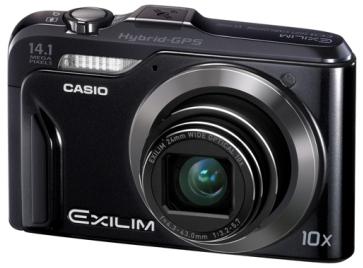
Casio’s EXILIM Hi-Zoom lineup, the EX-H20G offers an impressive feature set as well as Casio’s state-of-the-art Hybrid GPS technology, which makes the camera perfect for traveling. Thanks to Casio’s Hybrid GPS system, the EX-H20G offers ultra-precise location data for the geotagging of photos and videos and is also the first camera able to geotag indoors. Additionally, the EX-H20G can display the user’s current location – as well as geotagged photos and videos – on a map which can be viewed right on the camera itself.
The EX-H20G will be available November 2010 for $349.99.
Specification and press release of Casio EX-H20G
|
KEEP THIS BLOG ALIVE - Support New Camera Buy Canon Lenses, Buy Music CD or Digital Camera at amazon it helps this site, and you do not pay anything extra, it is just a way to help support this site.

|

















